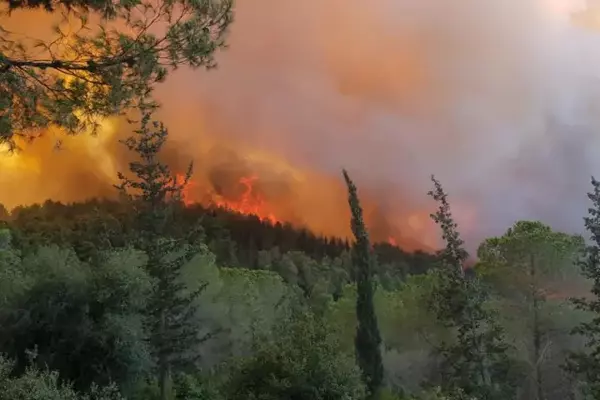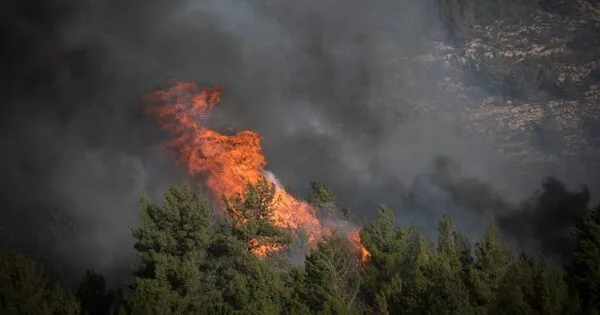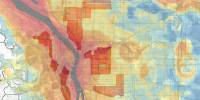A wildfire is an unintentional fire that starts in a natural area such as a forest, grassland, or prairie. Wildfires are often started by humans or natural phenomena such as lightning, and they can occur at any time or in any location. It is unknown how 50% of wildfires began. Wildfires are more likely in extremely dry conditions, such as drought, and during strong winds. Wildfires have the potential to disrupt transportation, communications, power, and gas services, as well as water supply. They also cause a decrease in air quality as well as the loss of property, crops, resources, animals, and people.
According to new research, increased atmospheric demand for water means a dramatic increase in the risk of major fires in global forests unless we take urgent and effective climate action. Researchers examined global climate and fire records in all of the world’s forests over the last 20 years and published their findings in Nature Communications.
The researchers discovered a strong relationship between fire activity and vapor pressure deficit (VPD), a measure of the thirst of the atmosphere, in all types of forests. Temperature and humidity are used to calculate VPD. It describes the difference between the amount of moisture in the air and the amount of moisture the air can hold when saturated. The greater the difference, or deficit, the greater the drying power of air on fuels.
Importantly, warmer air can hold more water, which means that VPD increases and fuels will dry out more often – with rising temperatures due to climate change.
Without strong climate action, there will be many more days each year at least 30 when Earth’s forests cross over into this critical flammability zone. This means we’re likely to see more major fires, with all the risks that come with them.
Dr Clarke
The researchers used satellite records of fire activity and a global climate dataset to find the maximum daily VPD for every fire detection over 30 million records in the last 20 years, including almost one million in Australia. They then measured the strength of the relationship between VPD and fire activity for different forest types on each continent on earth.
The researchers demonstrated for the first time that there is a strong link between fire activity and how thirsty the air is on a daily timescale in many forests around the world, ranging from temperate eucalypt forests to boreal coniferous forests and tropical rainforests.
The findings indicate that forest fires are much more likely in VPD above a certain threshold. This threshold was found to vary predictably across forest types, being lower in boreal (predominantly northern European and American coniferous forests) and temperate forests, and higher in Mediterranean, subtropical, and tropical forests.

Dr. Hamish Clarke of the University of Melbourne’s FLARE Wildlife Research group said that the conditions that cause forests to dry out and become flammable are likely to become more common around the world.
“Some of the most important areas of concern are the Amazon rainforest and other tropical forests, as well as temperate and boreal forests in the northern hemisphere,” Dr. Clarke said. Increased forest fire activity could have serious consequences for carbon storage and human health due to the effects of wildfire smoke.
“Without strong climate action, there will be many more days each year – at least 30 – when Earth’s forests cross over into this critical flammability zone. This means we’re likely to see more major fires, with all the risks that come with them,” Dr. Clarke said.
“It is currently estimated that over 330,000 annual deaths worldwide are attributable to smoke inhalation, a figure that could rise significantly by the turn of the century, particularly in East Asia’s most densely populated areas.”
The presence of reliable links between atmospheric dryness and forest fire risk, according to the researchers, means that we should be able to develop better fire predictions at both seasonal and near-term scales. “This could have significant benefits for those who are currently fighting, managing, or coexisting with fire,” Dr. Clarke said.
















